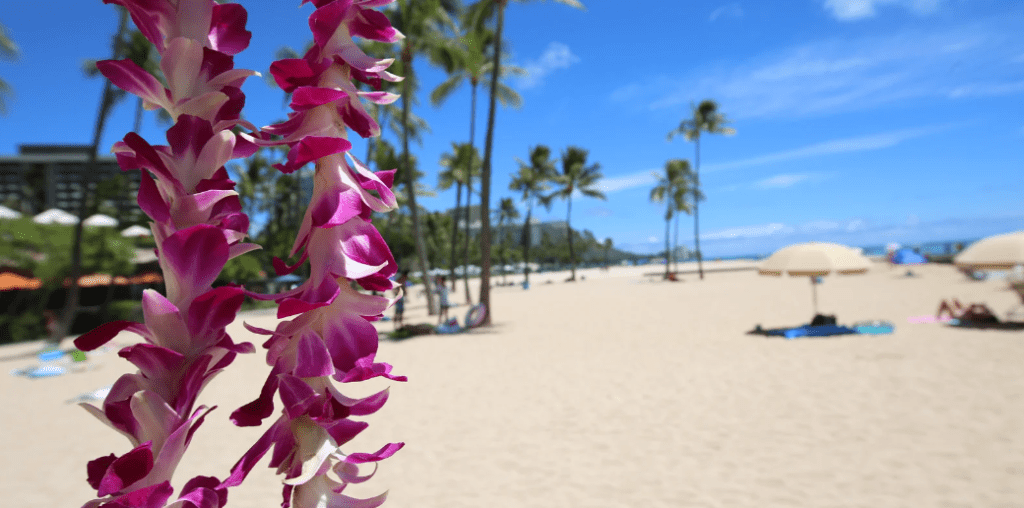Rome feels like a living museum, brimming with stories just waiting to be uncovered. Let’s explore...
Travel Guides
With its mesmerizing beaches and rich cultural traditions, Hawaii stands out as a prime travel destination. To help you plan your trip, this guide explores the best times to experience the islands' natural wonders and lively local events.


Hawaii, often dubbed paradise on Earth, is a dream destination known for its breathtaking beaches and lush tropical landscapes. Adding to its charm are Hawaii's rich cultural traditions, deeply rooted in Polynesian history. Each year, around 9 to 10 million visitors come to experience Hawaii's breathtaking beauty and unique culture. With that in mind, let’s take a closer look at the best time to visit Hawaii, considering factors like weather, activities, and local events.
The best time to visit Hawaii is during the shoulder seasons of April to May and September to October. These months provide pleasant weather, lighter crowds, and more affordable accommodation rates.
The peak season occurs from mid-December to March, when tourist numbers soar due to holidays and winter escapes. While this period features warm temperatures and exciting local events, it also brings larger crowds and higher prices.
With mild temperatures year-round and varying weather patterns across the islands, Hawaii's climate sets the stage for a wide range of outdoor activities, from surfing and snorkeling to hiking and sightseeing.
Let’s explore some of the important aspects of Hawaii’s weather, including seasonal changes, how the ocean impacts the climate, and rainfall patterns.
Hawaii’s climate is characterized by mild temperatures year-round, moderate humidity, and consistent northeasterly trade winds. The islands have two primary seasons: summer (from May to October) and winter (from October to April). This tropical environment, influenced by Hawaii's latitude and the surrounding ocean, creates distinct weather patterns across the islands.
Typically, the warmest months are August and September, while the coolest months are February and March.
| Month | Average High (°F / °C) | Average High (°F / °C) |
| January | 66°F / 19°C | 80°F / 27°C |
| February | 65°F / 18°C | 81°F / 26°C |
| March | 67°F / 19°C | 82°F / 26°C |
| April | 68°F / 20°C | 83°F / 28°C |
| May | 70°F / 21°C | 85°F / 29°C |
| June | 72°F / 22°C | 87°F / 31°C |
| July | 74°F / 23°C | 88°F / 31°C |
| August | 75°F / 24°C | 89°F / 32°C |
| September | 74°F / 23°C | 89°F / 32°C |
| October | 73°F / 23°C | 87°F / 31°C |
| November | 71°F / 22°C | 84°F / 29°C |
| December | 68°F / 20°C | 82°F / 28°C |
Hawaii’s rainfall is highly variable, with coastal areas averaging 25 to 30 inches annually, while some locations receive up to 15 times more. The orographic effect, where moist trade winds are pushed upward by the mountains, greatly contributes to this variation.
Most heavy rainfall occurs during winter storms from October to April, and differing terrain can create substantial rainfall differences over short distances.
Hawaii is home to a rich array of cultural festivals and events throughout the year that highlight its lively traditions. Here are a few notable ones not to miss:
If you're looking for a more budget-friendly time to travel to Hawaii, consider visiting during the off-peak months from mid-January to mid-March, or September to mid-December. During these periods, you can typically find lower airfare and accommodation rates, making it easier to enjoy the beauty of the islands without overspending.
While prices may be lower, keep in mind that the weather may be slightly cooler, especially in the winter months, and there may be occasional rainfall. However, many argue that the trade-off is worth it for the peace and tranquility found during these less crowded times.
For a fulfilling experience in Hawaii, it's best to plan for at least 10 days. Here’s a suggested itinerary for your Hawaiian adventure:
When preparing for your trip to Hawaii, it’s important to pack wisely to ensure a comfortable and enjoyable experience. Opt for lightweight, breathable fabrics made from cotton or linen to help you stay cool in the warm weather; be sure to include plenty of shorts, t-shirts, and sundresses.
Don’t forget your swimwear for beach days and relaxing by the pool — consider bringing a cover-up for visits to shops and restaurants. While Hawaii is generally warm, evenings, especially at higher elevations, can be cooler, so a light jacket will help keep you cozy during those times.
When it comes to footwear, comfortable walking shoes are essential for exploring, hiking, and sightseeing in Hawaii. Consider packing slip-on shoes or sandals for easy wear during beach outings. Additionally, if you plan on visiting rocky beaches or engaging in water activities, water shoes can provide extra protection and support.
Besides shoes and clothes, here are some helpful accessories and essentials to consider for your trip:
Staying connected while discovering Hawaii is essential for navigation, sharing your experiences, and maintaining contact with friends and family. An eSIM provides a convenient solution, enabling you to activate a data plan directly on your device without needing to change physical SIM cards.
Here are some of the leading eSIM providers for your trip to Hawaii:
Holafly offers unlimited data plans specifically designed for travelers in Hawaii. You can easily activate their eSIM upon arrival, ensuring you stay connected throughout your trip. With 24/7 customer support, help is always available when you need it.
Nomad is a provider of data-only eSIM solutions designed for travelers who need reliable internet access while on the go. With a focus on affordability and user-friendly experiences, Nomad offers a variety of data plans that can be easily managed through their mobile app.
Airalo stands out for its extensive coverage in over 190 countries and its user-friendly app that simplifies the process of downloading and activating an eSIM. Its variety of flexible data plans caters to different travel needs, making it a practical choice for international travelers.
Here’s a brief overview of the data plans and pricing offered by these eSIM providers in Hawaii.
| Provider | Plans available | Price | |
| Holafly | Unlimited plans | from $6.90 | |
| Nomad | 1 GB, 3 GB, 5 GB, 10 GB, 20 GB | From $7.00 | |
| Airalo | 1 GB, 2 GB, 3 GB, 5 GB, 10 GB, 20 GB, | From $4.50 (free 1 GB 1-day plan) | |
Hurricane season in Hawaii typically runs from June to November, with the highest risk usually in August and September.
It's best to book your trip at least three to six months in advance to secure better rates and availability.
The least crowded months are typically September and October, as well as February and March.
Maui is generally considered the most expensive island in Hawaii due to higher accommodation and activity costs.
Waikīkī Beach on Oʻahu is often regarded as the top vacation spot, known for its beautiful shoreline, lively nightlife, and accessibility to attractions.

